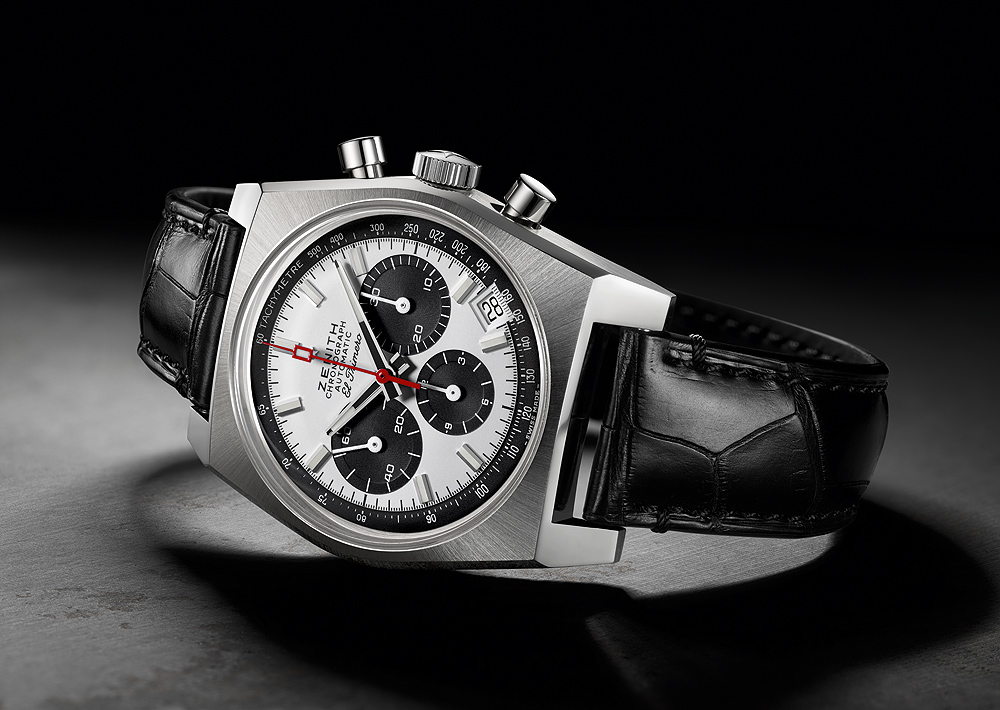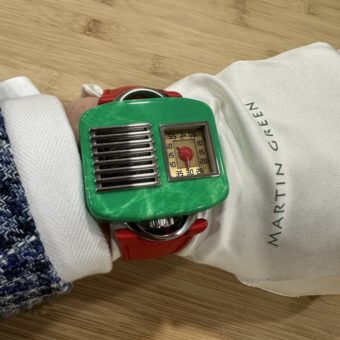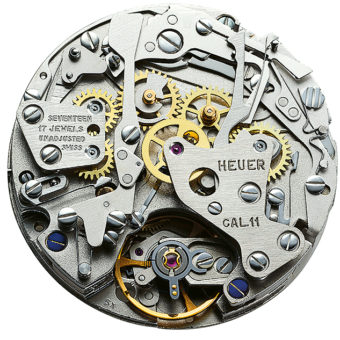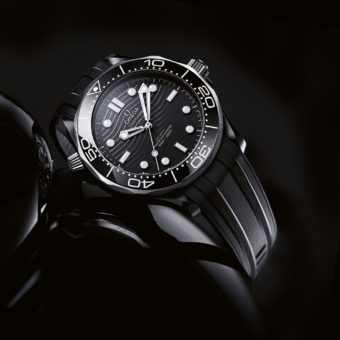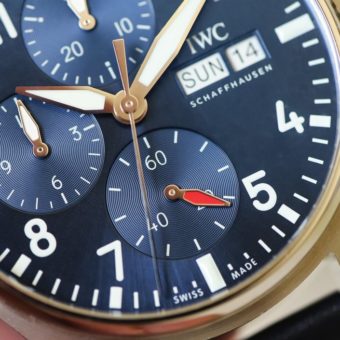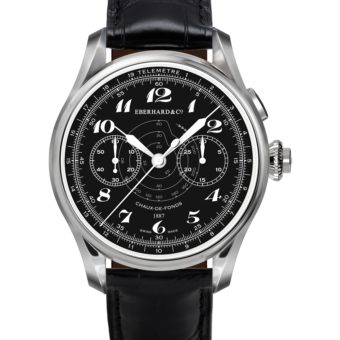As we approach the end of 2019 and prepare for 2020 — surely destined to be another interesting year in the world of watches — we take a look back at some of the most noteworthy timepieces that came out this year, in various popular categories. Today, we look at 10 chronograph watches released in 2019 that stood out from the pack.
Despite the industry-wide focus on its much-discussed new Code 11:59 collection, Audemars Piguet actually did launch several other notable new timepieces in 2019, including new models from the Royal Oak Offshore series with colorful ceramic case elements and color-coordinated camouflage-motif rubber straps. The Royal Oak Offshore Selfwinding Chronographs for 2019 use colored, high-tech ceramic for the bezel, chronograph pushers, and screw-locked crown. The colors of the bezels are echoed in the watches’ dials, which feature the “Mega Tapisserie” motif emblematic of the Offshore models, and in the integrated camo pattern straps, which are made of rubber. Inside, beneath a clear sapphire caseback, beats Audemars Piguet’s manufacture Caliber 3126/3840, a self-winding, chronograph-equipped movement with 59 jewels, a 21,600-vph frequency, and a minimum 50-hour power reserve. The tricompax dial layout offers subdials at 12, 9, and 6 o’clock and a round date window at 3 o’clock. Click here for more info and additional versions.
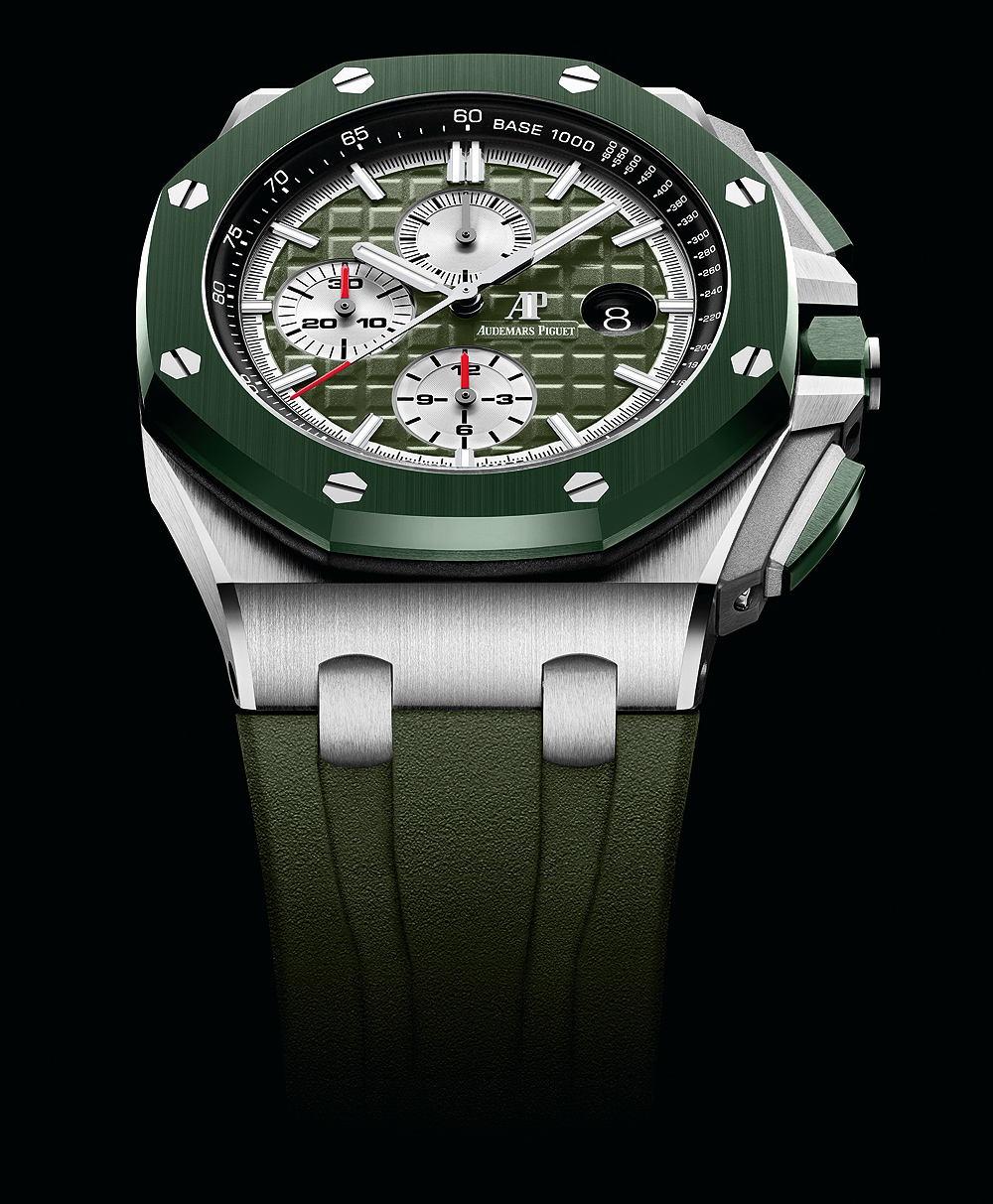
Bulgari just keeps on breaking thinness records in the watch world, and its latest impressive effort was revealed to admiring eyes at Baselworld 2019. The Octo Finissimo GMT Chronograph boasts the current record for thinnest automatic chronograph movement, at just 3.3 mm thick. Like the record-breaker that preceded it in 2018, the Octo Finissimo Tourbillon Automatic, it is fitted with a new in-house caliber (dubbed the BVL 318, with a 55-hour power reserve) that performs its automatic winding with a peripheral oscillating weight positioned on the back of the movement. The sandblasted titanium case is itself wafer-thin, its 42-mm diameter rising just 6.9mm above the wrist despite being water resistant up to 30 meters. In addition to the stopwatch, the watch hosts a GMT function that allows the wearer to easily advance the hour hand with a push-button. More details, and close-up photos taken at Baselworld, can be found here.
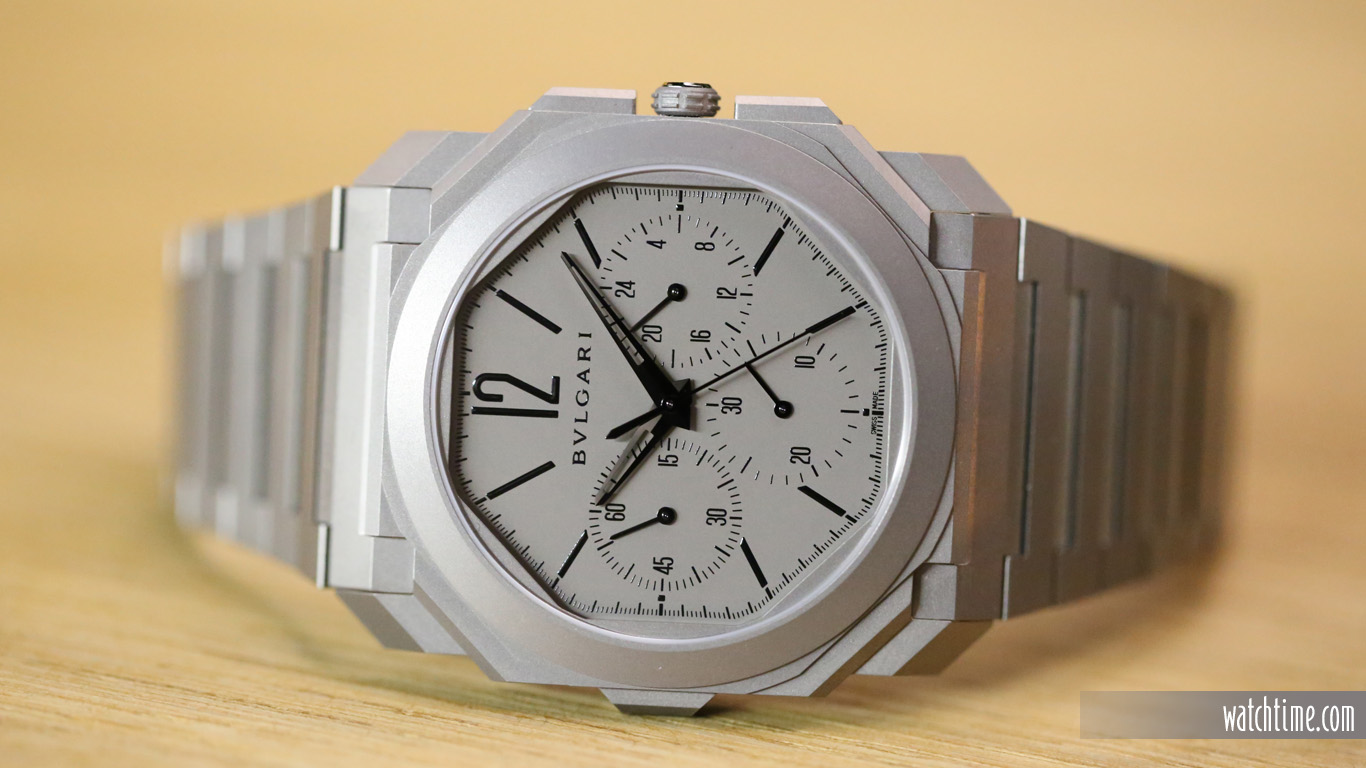
Directly inspired by a 34-mm bicompax chronograph from 1956 that was discovered in the Lucerne-based brand’s archives, the Carl F. Bucherer Bicompax Annual combines an annual calendar with a chronograph, in a 41-mm case available in either stainless steel, with a silver dial and a black-and-white “panda”-style dial orientation, or in two-tone rose gold with a rose-and-champagne dial. The annual calendar indicator consists of a big date indicator in the upper half of the dial and a month aperture tilted between 4 and 5 o’clock. The dial’s historically inspired details include syringe-shaped hands filled with Super-LumiNova, vintage-style Arabic numerals, elongated chronograph pushers, a box-style sapphire crystal, and the usage of a black rubber strap for the panda dial and a cognac brown calfskin strap for the champagne-dialed, two-tone model. Ticking inside is automatic Caliber CFB 1972 (an ETA base movement with a Dubois Dépraz module), which stores a 42-hour power reserve. Each version is limited to 888 pieces, in homage to Bucherer’s founding date of 1888.
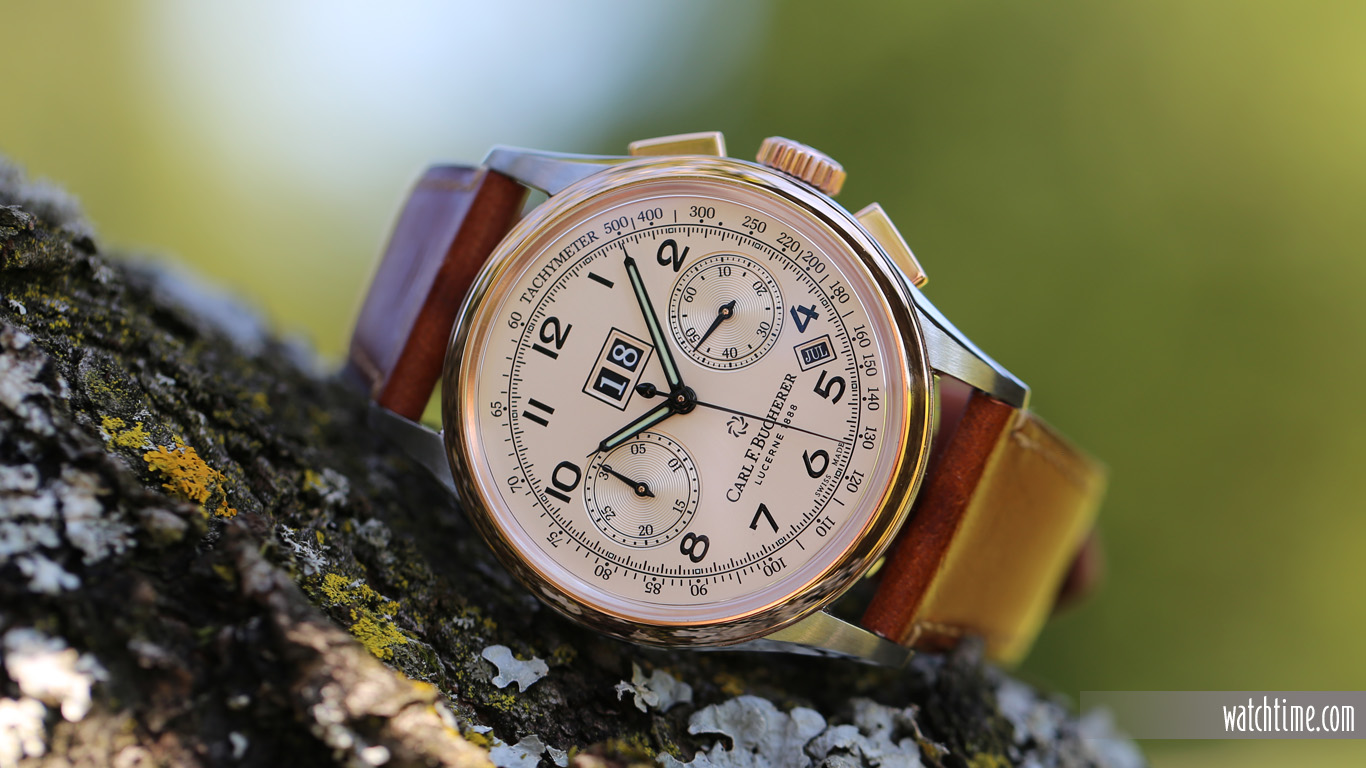
Many luxury watch brands have partnered with automobile brands, but one of these partnerships that is little known in the United States is that between two Japanese marques: Grand Seiko and Nissan. The watchmaker has produced a handful of special-edition timepieces inspired by and paired with the automaker’s iconic Nissan GT-R racing cars, but up until this year, those watches were only sold in Japan. The Grand Seiko Nissan GT-R 50th Anniversary Limited Edition, released in concert with the 2020 Nissan GT-R 50th Anniversary Edition car, is limited to 200 pieces and commemorates dual anniversaries: 50 years of the Nissan GT-R and 20 years of the Seiko Spring Drive caliber. The watch uses “Bayside Blue,” famously introduced in the livery of the 1969 GT-R automobile, for several elements on the case, dial, and strap. The 46.4 mm-diameter case is made of high-intensity titanium and the Nissan racing livery, with its familiar white racing stripe, finds homage in the silvery-white dial with stacked chronograph subdials and the shiny white strap. The movement is Seiko’s Spring Drive Caliber 9R96, which achieves its high level of accuracy through its combination of a balance wheel, electromagnetic energy, and a quartz oscillator instead of a traditional escapement. More details and images here.
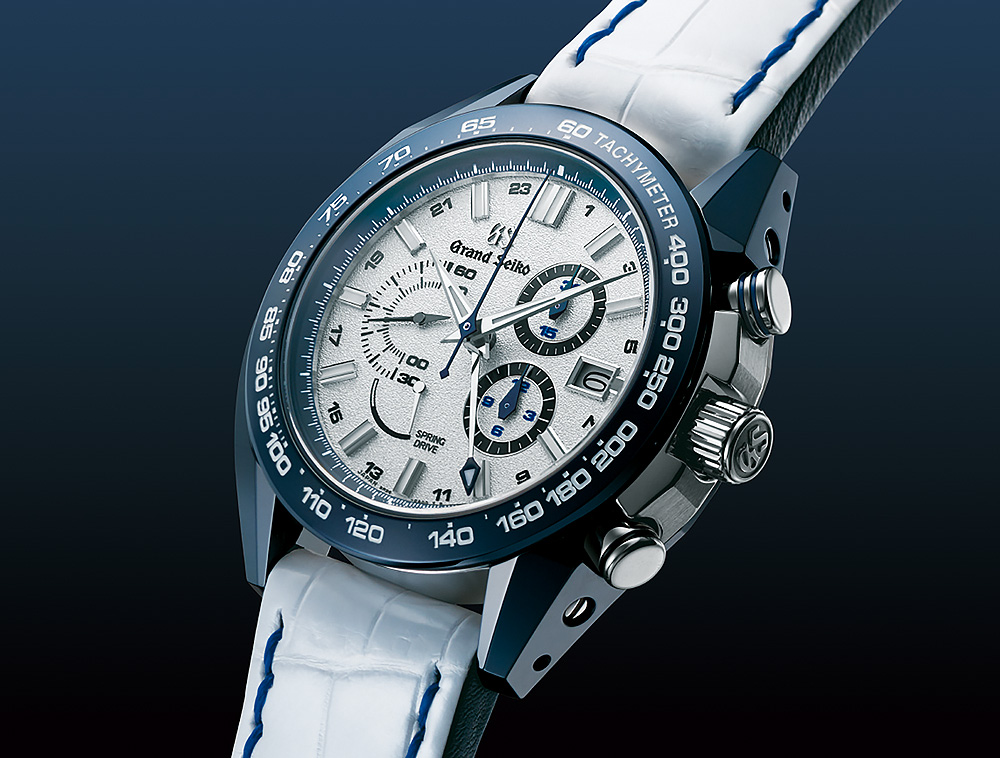
The Hublot Classic Fusion Chronograph Orlinksi Red Ceramic, limited to 200 pieces, is distinguished by the red ceramic used for its 45-mm case and sharply edged, angular bezel, for which Hublot’s research-and-development team needed four years to take from concept to industrialization, using a special process that fuses pressure and heat to sinter the ceramic without burning the pigment. The totally in-house process resulted in a secret, patent-protected formula, whose end result is a ceramic that not only achieves the extremely difficult red coloring but also a greater hardness than previous ceramics (1,500 HV1 vs. 1,200 HV2). The red coloring and geometrical angled lines of the case evoke the sculpture Born Wild Crocodile, from the oeuvre of French artist Richard Orlinski, which established the use of powerful shades of red as part of his Pop Art-style repertoire. The polished crimson case houses Hublot’s self-winding Caliber HUB1155, a skeletonized chronograph movement with a 42-hour power reserve and a 28,800-vph (4 Hz) frequency. The subdial at 9 o’clock tallies 30 elapsed minutes, while the hour and minute are displayed on red-lacquered hands and the small seconds tick away on the subdial at 3 o’clock.

Montblanc’s modern timepiece collection derives much of its aesthetic character from the historical watches of Minerva, a heralded Swiss producer of chronographs whose ancestral atelier was acquired by Richemont in 2006 and revived as the Montblanc Manufacture. The 1858 Split Second Chronograph Limited Edition 100 re-envisions the Minerva military watches of the 1930s in a luxurious contemporary vein. The watch has a 44-mm case made of full-satinated bronze and a black lacquered dial with rose-gold-colored details that echo the look of the case. Based on a legendary Minerva chronograph watch, the dial is defined by two classically designed scales on its periphery: a telemeter scale, used to measure distance based on visible and audible phenomena — i.e. the time between a flash of lightning and the first rumble of thunder — and a snail-shaped tachymeter scale in the dial’s center for measuring the speed of a moving object over a known distance. Both scales employ the watch’s monopusher rattrapante chronograph to measure intermediate times without interrupting the measurement of a longer interval. The integrated chronograph movement is the manually wound Montblanc Caliber MB M16.31, equipped with two column wheels, one driving the chronograph, the other controlling the split-seconds function. More details here.

It was a big year for Omega, which celebrated its historical milestone as maker of the first watch worn on the moon with the release of several special editions of its Speedmaster Professional “Moonwatch,” which accompanied the astronauts of Apollo 11 onto the lunar surface in 1969. It’s difficult to focus on just one, but we’re going with the Omega Speedmaster Apollo 11 50th Anniversary Limited Edition in Omega’s new “Moonshine gold” alloy. It’s a modern re-creation of a now-rare watch, with a yellow-gold case and burgundy bezel, given out at an “Astronauts Appreciation Dinner” in Houston in 1969 to celebrate the moon landing. Paler in hue than the 18k yellow gold used for the original model, Moonshine gold — composed of gold, silver, and palladium — has a high resistance to fading of color and luster over time. It’s used here not only for the case but also the dial, hands, and bracelet. The burgundy-colored tachymeter bezel, aluminum on the historical model, is in ceramic on the re-creation. Inside is Omega’s Master Chronometer Caliber 3861, which is manual wound like the original model’s Caliber 861, but includes a host of contemporary Omega elements like a co-axial escapement and a silicon balance spring, in addition to being enhanced for this special edition with a gold-plated mainplate and bridges. Lots more details on the watch, and its gala launch event at Cape Canaveral, can be found here.
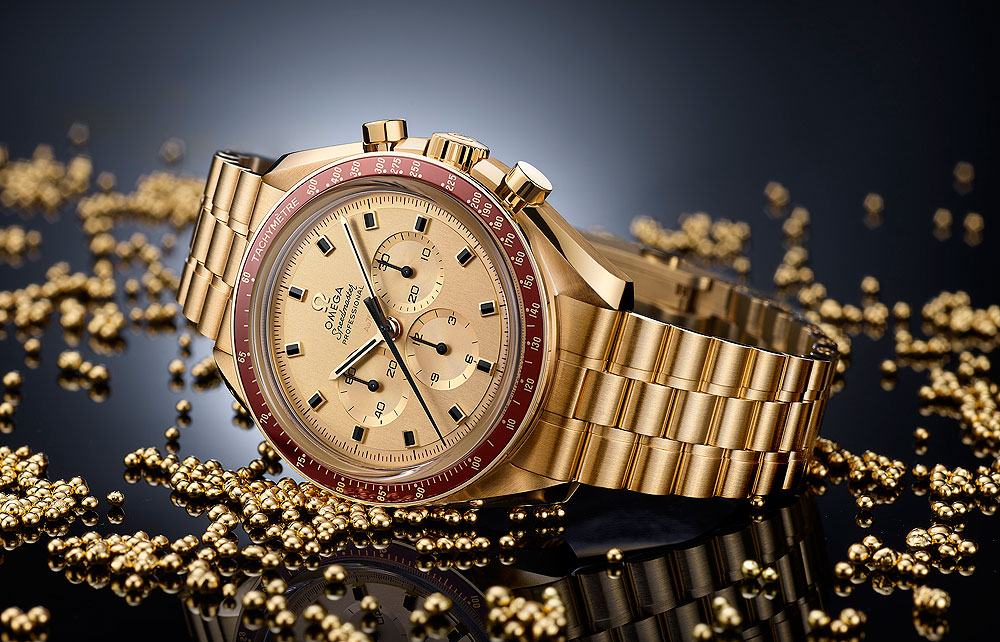
Patek Philippe introduced the first chronograph in its sportiest and perhaps most accessible family, the Aquanaut, in 2019. The steel case of the Aquanaut Chronograph (Ref. 5968A-001), with its hallmark gently-rounded octagonal bezel, measures 42.2 mm in diameter and 11.9 mm thick and features alternating satin and polished finishing on its surfaces and flanks. The screw-down crown is embedded between the shoulders of a curving crown protector, which in turn is bordered on each side by two elongated chronograph pushers. The graduated light-to-dark gray dial sports the familiar embossed pattern of the Aquanaut range, with applied white-gold numerals and indices, a large, 60-minute chronograph-counter subdial at 6 o’clock subtly shaped to echo the curved octagonal shape of the bezel, and orange highlights to identify the chronograph indications. Patek Philippe’s automatic manufacture Caliber CH 28-520 C controls the watch’s integrated flyback chronograph function, which combines a classic column-wheel control with a modern vertical disk clutch. The latter device is designed to prevent the chrono hands from bouncing and rebounding when the stopwatch is started and, as an added bonus, allows the center-mounted sweep chronograph seconds hand to also be used as a continually running seconds hand due to its nearly friction-free design. This model also marks the debut of a new, cleverly designed foldover clasp with four independent catches for enhanced functionality in opening and closing. Click here for more details and photos.
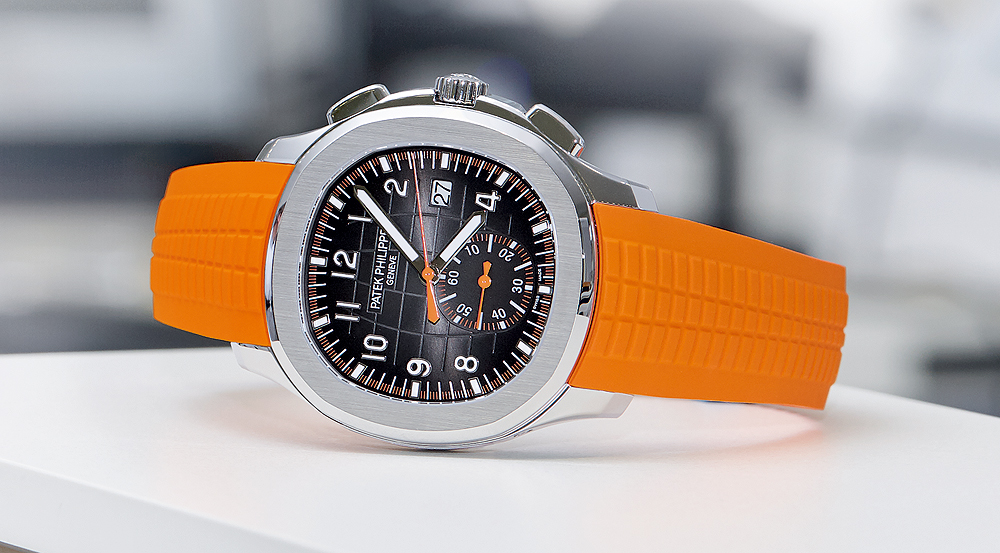
It wouldn’t be a complete roundup of the year’s chronograph highlights without a mention of another 50-year anniversary, this one for TAG Heuer’s iconic Monaco model, which was fêted with five new limited editions, each inspired by the original and representing one decade of the Monaco’s existence. We’ll go with the first-issued and funkiest-looking of the quintet, the Monaco 1969-1979 Limited Edition, whose dial was designed to channel the shapes and colors of the 1970s — dark green with brown and yellow details on the indices and hands, with grayish “sunray black” for the emblematic, softly squared subdials at 3 o’clock and 9 o’clock. The addition of an elegant côtes de Genève finish to the dial of this famously sporty model also identifies it as special and collectible. The square 39-mm steel case has its chronograph pushers positioned at 2 and 4 o’clock on the right side, and the unconventionally placed at 9 o’clock on the left side, an arrangement pioneered by the original Monaco. Inside is the contemporary version of the famous Caliber 11, with automatic winding, a rapid date correction and a 40-hour power reserve. For more on the colorful history of the Monaco, click here.
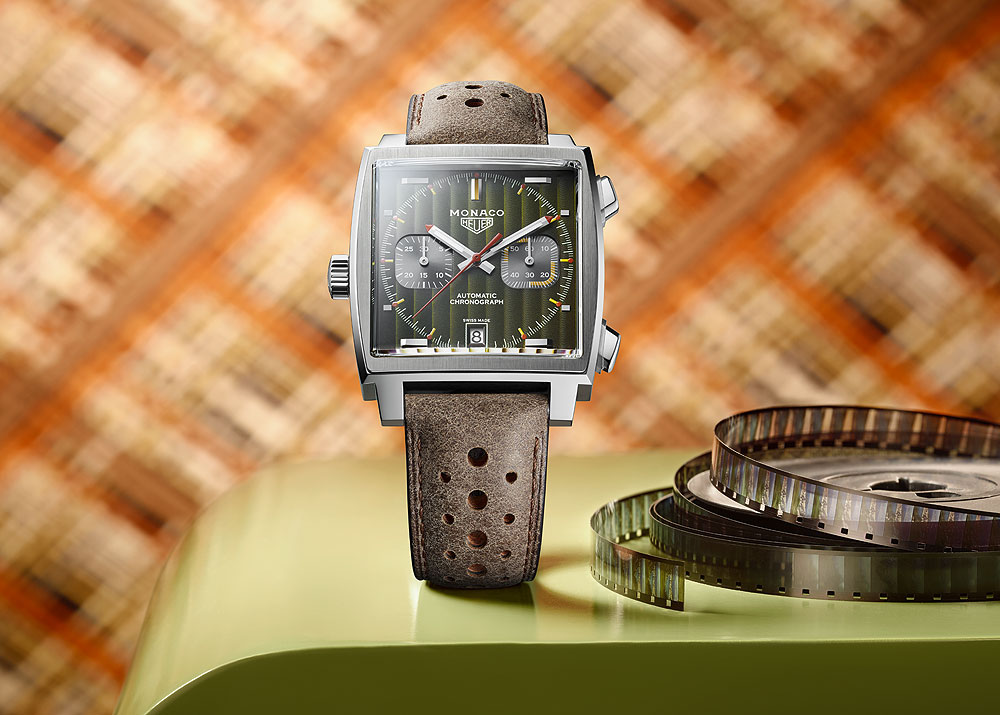
Zenith, in the (you guessed it) 50th anniversary year of its heralded El Primero chronograph caliber, also offered a challenge as to which new watch to spotlight. We went with the most buzz-worthy piece among collectors and vintage-watch freaks, the El Primero A384 Revival, an almost note-for-note reproduction of the first wristwatch to house the El Primero, with a black-and-white “panda” subdial design. Zenith used a “reverse engineering” approach to create the watch, digitizing each component of the 1969 original to reproduce all elements as precisely as possible. The most major of these include the 37-mm-diameter, faceted, stainless steel case; the black-and-white lacquered dial with its surrounding tachymeter scale; and the mushroom-style chronograph pushers at 2 o’clock and 4 o’clock. The manufacture took a more modern approach to the caseback, which was solid steel in the original but on this new model features a clear sapphire window to display the El Primero 400 caliber, the most up-to-date version of the classical movement, honed and fine-tuned over the course of a half century since its ancestor debuted. For those seeking out the most historically accurate version of the watch, Zenith will offer it on an integrated “ladder” steel bracelet of the type that graced the 1969 watch, as well as the black alligator strap shown here. Click here for more.
